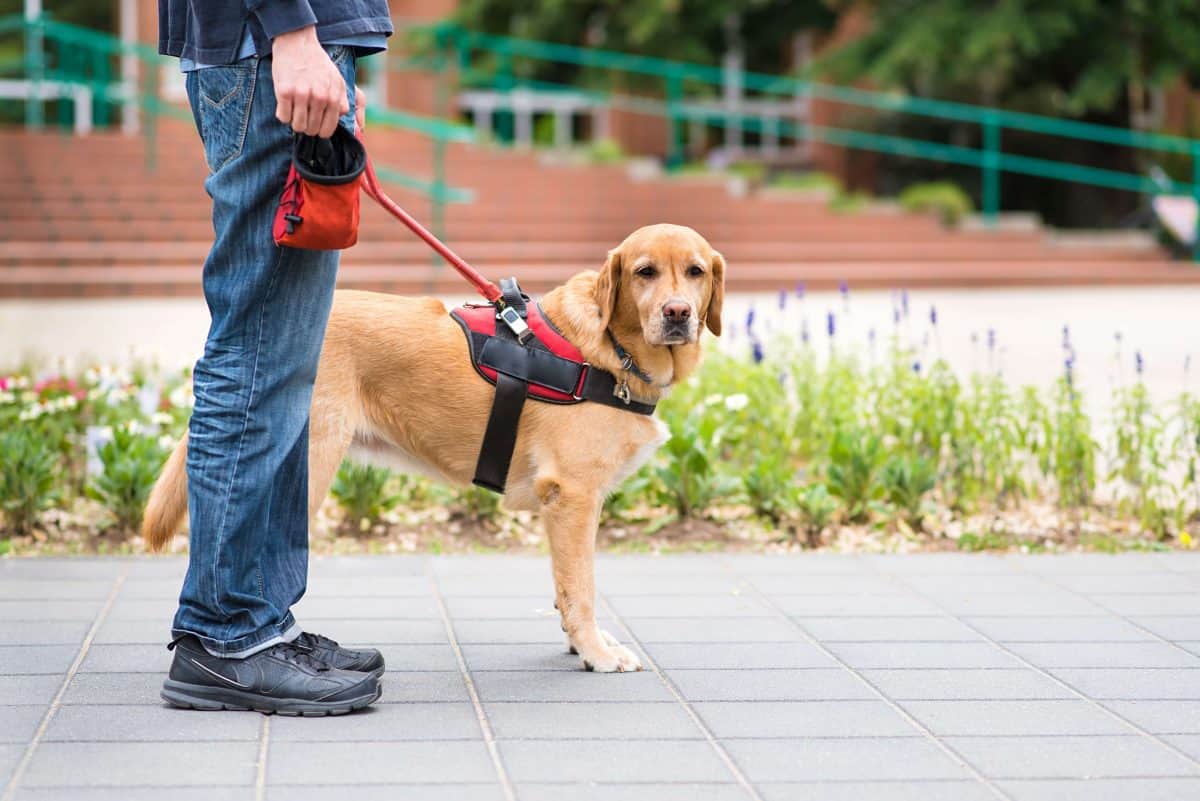Service Dog Requirements: What You Need to Know

Navigating the world of service dog requirements can be confusing. This guide will help you understand what it takes to own a well-trained, reliable service dog.
Legal Definitions and Requirements
Federal Laws
First things first, let’s get the legal jargon out of the way. The Americans with Disabilities Act (ADA) sets the gold standard for service dog requirements. This federal law states that service dogs must be specifically trained to do work or perform tasks for the benefit of an individual with a disability. The Air Carrier Access Act (ACAA) also chimes in, outlining the rights of service dog owners when traveling by air.
State Laws
However, don't overlook state laws. These can sometimes offer additional protections but also set restrictions. For example, some states require service dogs to wear an identification vest, even though federal law doesn't mandate this. It's crucial to research your state's laws to ensure full compliance.
Types of Service Dogs
Service dogs come in all shapes and sizes, trained to assist with a variety of needs. Below are some general classifications, but there are at least 10 types of service dogs.
- Guide Dogs: Assist the visually impaired
- Emotional Support Animals: Provide emotional comfort
- Psychiatric Service Dogs: Help individuals with mental health conditions
- Mobility Assistance Dogs: Aid those with physical limitations
- Medical Alert Dogs: Detect and alert to medical conditions like seizures
Certification and Identification
Is Certification Necessary?
Surprisingly, the ADA does not require service dogs to be formally certified. However, many organizations, offer certification programs that can make your life easier by providing documentation to prevent people from questioning the legitimacy of your service dog.
Types of Identification
Some common forms of identification include ID cards, certificates, and vests. While not mandated by federal law, these identifiers can help avoid misunderstandings in public places.
Basic Requirements for All Service Dogs
Age
When considering age, it’s not just about cuteness overload. Puppies are often not suitable for immediate training because their attention spans and temperaments are still developing. Typically, the recommended minimum age for starting formal service dog training is about 6 months to a year old. This allows the dog to mature enough to focus and understand cues effectively. Also, age considerations are vital in terms of the dog’s working lifespan; you want a dog that can serve for many years before retirement.
Health
Health is not something to be compromised when it comes to service dogs. A dog that is unwell can’t effectively assist its handler. Therefore, regular veterinary checks are imperative. Your dog will need to be up-to-date on all vaccinations and be free from any diseases that could be transmitted to humans or other animals. A thorough health screening usually includes heartworm tests, flea and tick preventatives, and general wellness exams that cover the condition of the dog’s coat, eyes, ears, and teeth. It's your responsibility to maintain an updated health record.
Temperament
Arguably, one of the most critical factors for a service dog is temperament. The ideal candidate must be calm but alert, disciplined yet affectionate, and responsive to commands without being overly aggressive. Behavioral assessments typically test how a dog reacts to strangers, other animals, and stressful situations. This is often conducted in multiple environments to simulate real-world conditions. Not all dogs pass this, and that's okay. Some dogs are better suited to be loving family pets rather than working service animals.
Training Requirements
Basic Obedience Training
Before diving into specialized tasks, a service dog must master basic obedience skills. This involves standard cues such as "sit," "stay," "come," "heel," and "down." It’s not just about obedience but also about cue recognition and immediate response, even in distracting environments.
Specialized Training
Once a dog has mastered the basics, they proceed to the specialized training tailored to meet the unique needs of their future handler. This could range from detecting low blood sugar levels for diabetic patients to assisting visually impaired individuals in navigation. The duration and intensity of this phase depend on the specific tasks the dog will need to perform.
Specialized training is more than teaching a dog what to do; it also involves teaching them what not to do. For example, a guide dog must learn to disobey a cue to move forward if it sees an oncoming car that the handler is unaware of.
Many of these specialized skills are taught at The Academy of Pet Careers if you are interested in becoming a dog trainer.
Testing and Maintenance
The service dog's journey doesn’t end at the completion of training. Periodic testing is critical to ensure that both the dog and handler are effectively working as a unit. Many organizations, offer periodic testing to make sure skills are being maintained at the appropriate proficiency. This process ensures that the dog’s skills are up to par and identifies any areas that may need a refresher course.
A well-trained service dog is the result of consistent, diligent training and meets all the outlined basic requirements. Both these phases are crucial in creating a dog that is more than a pet, but rather a lifeline for someone in need.
Responsibilities of the Handler
Ownership doesn't end with obtaining a dog and going through training. The handler must ensure proper care, including diet, exercise, and medical needs. Additionally, the handler must maintain the dog's training and be aware of public access rights and limitations.
Funding and Costs
Service dogs are an investment. From purchase and training to ongoing care, costs can add up. Some organizations offer financial aid, and some insurance policies cover the costs associated with service dogs.
Navigating service dog requirements can seem daunting, but understanding the laws, training, and care involved can make the process much more manageable. Service dogs are more than pets; they're life-changing companions.
Frequently Asked Questions
Generally, any breed can become a service dog, but they must meet age, health, and temperament requirements.
There's no formal maximum age, but older dogs may struggle with the rigorous training and the physical demands of the job.
Some insurance companies do offer policies that cover service dogs, including their training and medical needs.
While federal law does not mandate this, some state laws and organizations do. A vest also makes identification easier in public.
It's possible, but your pet would need to meet all the standard requirements for age, health, and temperament, and undergo specialized training.
 Author - Joseph Schifano
Author - Joseph Schifano
Joseph Schifano is the owner and President of The Academy of Pet Careers. With over 20 years of experience working in the pet field, managing large scale pet care businesses, he has experience in every facet of the industry. Joseph's focus is primarily on the business of pet care but his passion is in understanding animal behavior how a dog's brain works so we can improve the care we provide as pet professionals. He is a huge advocate for Pet Empowerment and Force Free training methods. Read more in Joseph's full bio.
